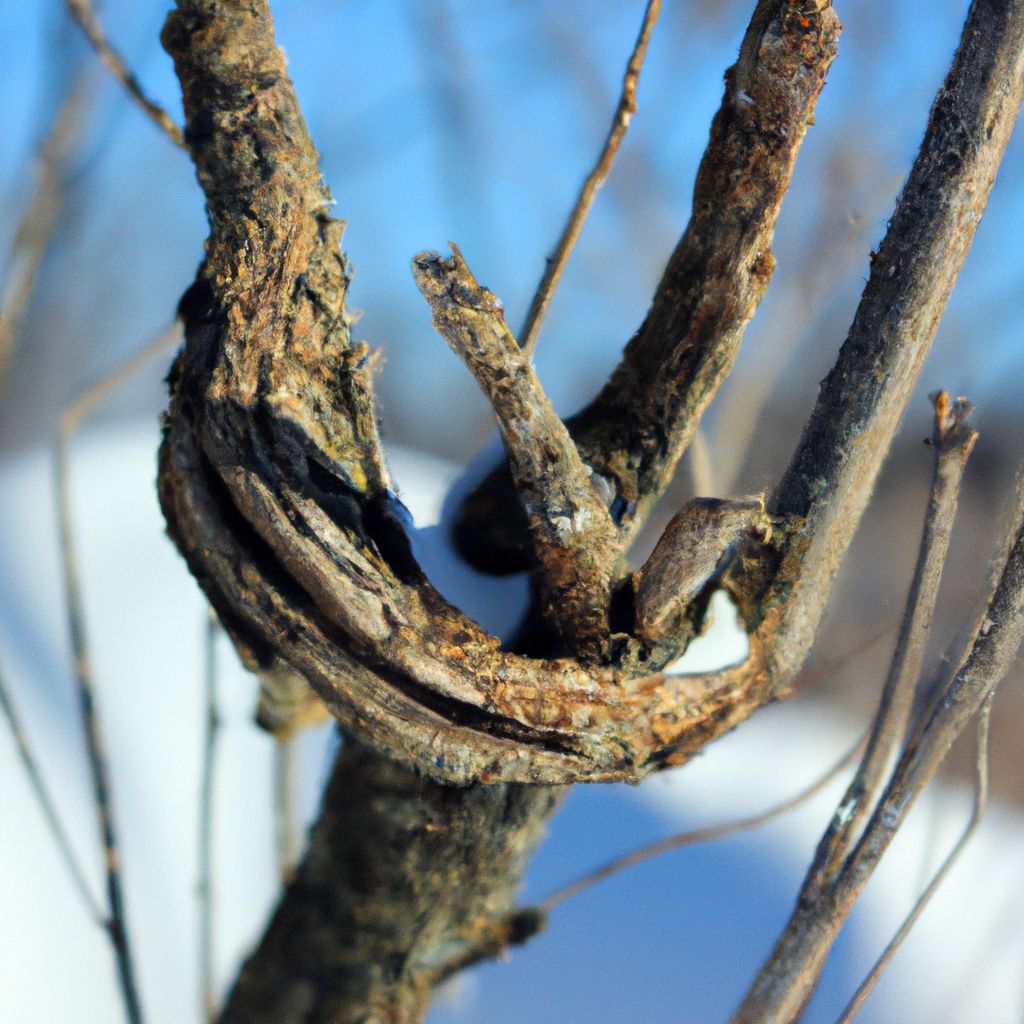Snakes, like many other cold-blooded animals, have fascinating winter habits. Understanding how snakes navigate through the winter season provides valuable insights into their behavior and survival strategies. This article aims to shed light on the topic and answer common questions related to snakes’ winter habits.
Why Do Snakes Hibernate?
Before delving into the specifics, it is important to understand hibernation itself. Hibernation is a state of regulated metabolic inactivity that allows animals to conserve energy during periods of unfavorable environmental conditions, such as cold temperatures and scarcity of food. Snakes hibernate to survive the winter when their natural food sources become scarce and temperatures drop.
Where Do Snakes Go During Winter?
Snakes employ various strategies to find suitable winter habitats. Some common locations include underground dens, rock crevices, boulders, tree holes, and even human-made structures like basements or crawl spaces.
How Do Snakes Prepare for Hibernation?
To prepare for hibernation, snakes undergo a series of physiological and behavioral adaptations. These include reducing their activity and metabolism, seeking shelter in suitable hibernacula, and building up fat stores to sustain them throughout the winter.
What Are the Adaptations of Snakes during Winter?
Snakes have unique adaptations that help them cope with the challenges of winter. These adaptations include thermal regulation mechanisms to maintain optimal body temperature and even antifreeze properties in their blood to prevent freezing.
How Do Snakes Survive Winter and Emerge in Spring?
As winter comes to an end, snakes gradually emerge from hibernation to resume their normal activity. They become more active, seek food sources, engage in mating behaviors, and prepare for the reproductive season.
Understanding the winter habits of snakes provides a glimpse into their remarkable ability to survive in challenging environments. By exploring these topics, we can gain a greater appreciation for the resilience and adaptability of these fascinating creatures.
Key takeaway:
- Snakes hibernate during winter: Hibernation is a period of inactivity for snakes due to cold temperatures and scarcity of food. Understanding their hibernation habits is crucial for their conservation.
- Snakes seek various shelters during winter: Snakes can hibernate underground, in rock crevices, tree holes, human structures, or seek shelter in other hiding spots. They choose these locations for protection and to maintain optimum temperature.
- Snakes survive winter through adaptations: Snakes regulate their body temperature during winter, and some species have antifreeze properties in their blood. They emerge from hibernation in spring, focusing on feeding and reproduction.
Why Do Snakes Hibernate?
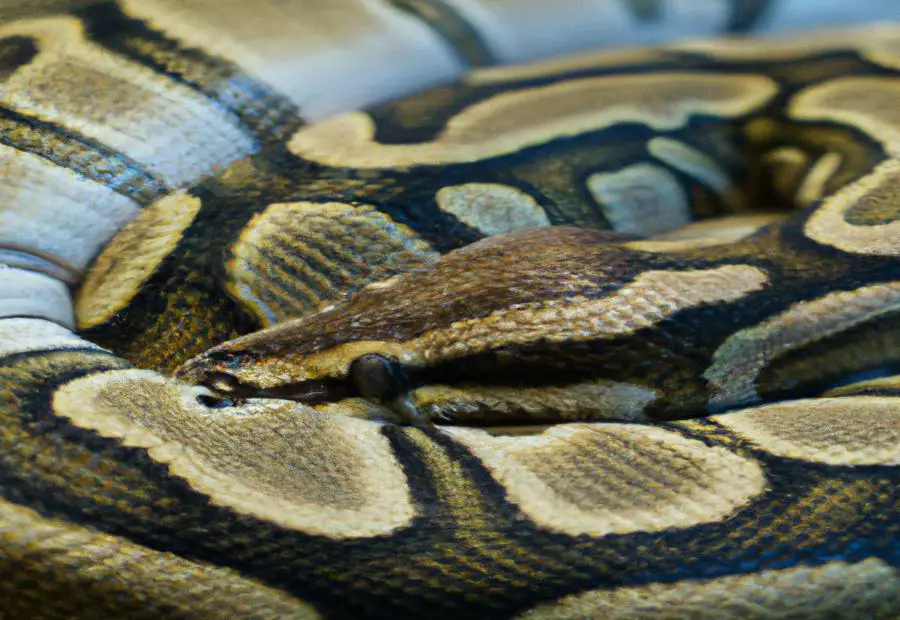
Photo Credits: Ruggedreptiles.Com by Stephen Rodriguez
Snakes hibernate for various reasons such as conserving energy, surviving harsh conditions, maintaining body functions, facilitating reproduction, and avoiding predators. This raises the question: “Why do snakes hibernate?” During winter, when food is scarce and temperatures drop, snakes hibernate to conserve energy and slow down their metabolism.
Hibernation enables snakes to endure freezing temperatures and lack of food that they wouldn’t survive otherwise. Although snakes are inactive during hibernation, their bodies still perform essential functions, including regulating their heart rate, respiration, and other bodily processes. For some snake species, hibernation is essential for successful reproduction, as it helps synchronize mating and ensures favorable conditions for offspring.
Hibernating snakes stay hidden underground, away from potential predators, increasing their safety. In 1834, explorers discovered a hibernating timber rattlesnake in a cave in Missouri. This finding provided valuable insights into snake hibernation and contributed to a deeper understanding of their winter habits.
What is Hibernation?
Hibernation is a natural phenomenon that occurs when snakes and other animals enter a state of inactivity and metabolic slowdown during the winter. What is hibernation? It is a period where snakes experience a significant decrease in body temperature, heart rate, and metabolism. They rely on stored fat reserves for survival until spring.
External factors like temperature and daylight hours trigger snakes’ hibernation. Snakes seek shelter in underground burrows, rock crevices, tree holes, or human-made structures. These locations offer stable and protected environments.
During hibernation, snakes enter a torpid state, conserving energy and surviving with limited food availability. They do not eat or drink and rely on fat stores built up during warmer months. Slowing metabolic processes help them survive without food or water.
What is hibernation and why is it crucial for snakes? It allows them to conserve energy, escape extreme weather, and avoid predators. In spring, snakes emerge from hibernation, increasing activity levels and searching for food and mates.
Understanding snake hibernation helps us appreciate their remarkable adaptations and survival strategies during winter.
What Triggers Snake Hibernation?
Snake hibernation is triggered by changes in temperature and daylight. What triggers snake hibernation? When days become shorter and temperatures drop, snakes begin preparing for hibernation. The decrease in daylight hours signals to the snakes that winter is approaching. They slow down their metabolism and activity levels in response to these changes.
Another trigger for snake hibernation is the drop in temperature. As temperatures decrease, snakes start seeking out hibernation sites for survival during the cold winter months. They instinctively know they need a place that protects them from freezing temperatures and offers a stable environment.
The combination of shorter daylight hours and cooler temperatures prompts snakes to enter a state of torpor. This hibernation state allows them to conserve energy and survive the winter when food is scarce. During this time, their metabolism slows down significantly, and they rely on stored energy reserves.
It’s important to note that not all snake species hibernate. Some snakes, especially those in warmer climates, may experience periods of reduced activity called brumation instead of true hibernation. Brumation is a state of reduced activity without a significant drop in body temperature.
Understanding what triggers snake hibernation is crucial to comprehend the winter habits of these creatures and their ability to survive in challenging conditions.
Where Do Snakes Go During Winter?
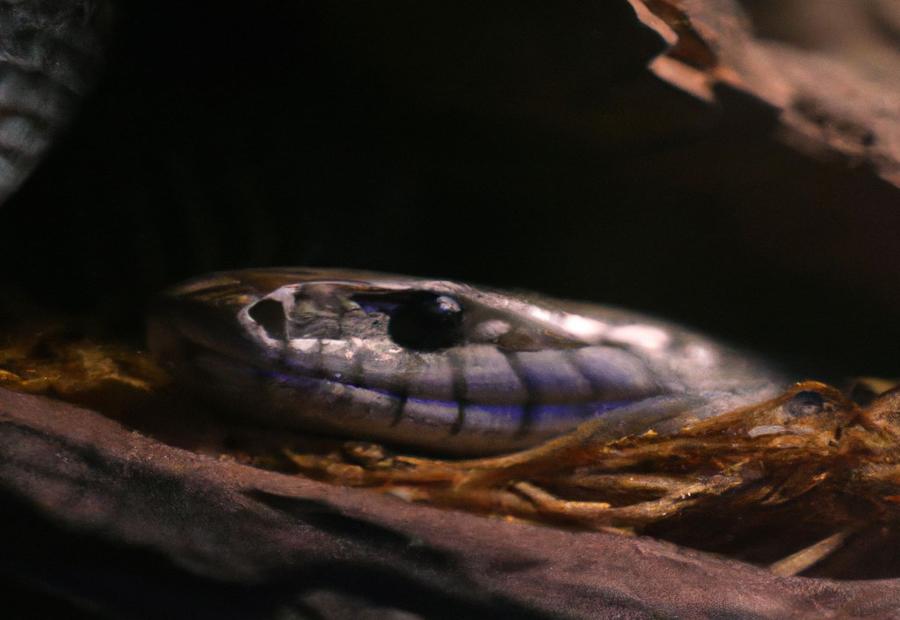
Photo Credits: Ruggedreptiles.Com by Daniel Miller
Wondering where snakes disappear to during winter? Let’s uncover the secret hideouts of these cold-blooded creatures. From underground hibernation to seeking shelter in rock crevices, boulders, tree holes, and even human structures, snakes have fascinating ways of surviving the chilly season. We’ll also explore how they prepare by building up fat stores to endure the winter months. Get ready to dive into the mysterious world of snakes and their winter habits!
Underground Hibernation
During winter, snakes undergo underground hibernation for shelter and protection from the cold. They search for crevices or burrow into the soil to create hibernation sites. These shelters help regulate their body temperature and protect them from extreme weather and predators. Underground hibernation allows snakes to conserve energy and enter a state of dormancy, reducing their metabolic rate significantly. When winter ends, snakes emerge in search of food and mates, signaling the arrival of spring. Underground hibernation is crucial for snakes to survive winter and conserve energy until warmer months return.
Rock Crevices and Boulders
Rock crevices and boulders play a crucial role in providing snakes with essential shelter during the winter season. These natural formations offer a safe haven, shielding the snakes from extreme weather conditions and serving as a secure hiding place.
The small gaps and cracks found within the rocks and boulders provide effective insulation against the cold, minimizing heat loss. Additionally, the rough and uneven surfaces of these formations act as a form of camouflage, allowing the snakes to effortlessly blend into their surroundings and avoid detection by predators.
Snakes can strategically position themselves within these structures to regulate their body temperature, seeking warmth by moving closer to the sunlit surfaces during colder periods and finding cooler spots when necessary. Apart from offering protection, rock crevices and boulders also act as natural obstacles, reducing the risk of predation and enhancing the overall safety for the snakes.
These formations enable effortless access, allowing the snakes to conserve energy throughout the winter months. By taking advantage of rock crevices and boulders, snakes are able to successfully survive the winter and reemerge in spring when temperatures become more favorable for their activities.
Tree Holes
Tree Holes
Snakes choose tree holes as winter shelters because they offer secure and concealed resting spaces. These cavities are formed through the decay or damage of the trunk. Tree holes provide insulation against extreme temperatures, helping snakes regulate their body temperature and conserve energy. The enclosed space also protects snakes from predators and harsh weather.
Tree holes can accommodate multiple snakes, allowing them to benefit from collective body heat and improve their chances of survival. They serve as essential winter shelters that offer protection, insulation, and the possibility of communal hibernation.
If you encounter a tree hole in a wooded area during winter, it’s best to avoid disturbing it. Tree holes provide vital refuge for snakes, and disturbing them may disrupt their hibernation and survival.
Human Structures
During winter, snakes seek shelter in human structures like buildings, houses, and cars for warmth and protection. To prevent snakes from entering your home, keep doors and windows closed and seal any gaps or holes in the walls or foundation. If you find a snake inside, contact a professional snake handler or pest control service for safe removal. Remember, some snakes can be venomous, so it’s best not to handle or remove them yourself. By taking precautions, you can reduce the chances of encountering snakes in your home and ensure safety for both you and the snakes.
Seeking Shelter
During winter, snakes seek shelter to survive the cold temperatures. So, where do snakes go?
1. Underground burrows: Snakes burrow underground to seek shelter from freezing temperatures. They find abandoned rodent burrows or create their own in the soil.
2. Rock crevices and boulders: Rocks provide natural crevices and gaps where snakes can seek shelter. They find warmth and protection in these natural shelters.
3. Tree holes: Tree-dwelling snakes seek shelter in tree holes or hollowed-out trunks. These provide a safe space for them to hide.
4. Human structures: Snakes may seek shelter in or around buildings, sheds, or basements. These areas provide warmth and protection.
5. Debris and vegetation: Snakes seek shelter by hiding in piles of leaves, fallen branches, or dense vegetation to stay protected during winter.
Seeking shelter is crucial for snakes during winter. By finding safe and warm locations, snakes conserve energy and survive until spring when they emerge from hibernation.
In 2015, a woman discovered a 14-foot Burmese python seeking shelter in her Florida garage during winter. The snake had escaped from a nearby pet owner’s collection and found refuge in the warm and secure environment of the garage. Authorities safely captured and relocated the python back to its natural habitat.
Building Fat Stores
During the winter season, snakes have a vital task of building up their fat stores in order to survive the harsh conditions. The accumulation of fat stores is essential for their survival as it enables them to endure hibernation. In preparation for the winter, snakes ramp up their food consumption, actively hunting for prey to ensure they consume enough calories that can be stored as fat. This increased intake of food plays a crucial role in building up their energy reserves, which they heavily rely upon during hibernation.
The amount of fat a snake accumulates varies depending on factors such as species, size, and habitat. Some snakes are capable of increasing their body weight by more than 30% before going into hibernation. This boost in fat stores provides insulation and serves as a source of energy during the scarce winter months.
Building fat stores serves as a vital survival strategy for snakes during the winter season. It helps them conserve energy, maintain their body temperature, and sustain themselves until the arrival of spring. Snakes carefully manage their energy resources to ensure that their fat reserves last throughout the entire hibernation period.
Here’s a pro-tip: if you create a safe and suitable habitat for snakes in your yard or garden, it can encourage them to thrive and build up adequate fat stores for the winter. Incorporating features like rocks, logs, and vegetation can support their natural behavior and fulfill their survival needs.
What Are the Adaptations of Snakes during Winter?
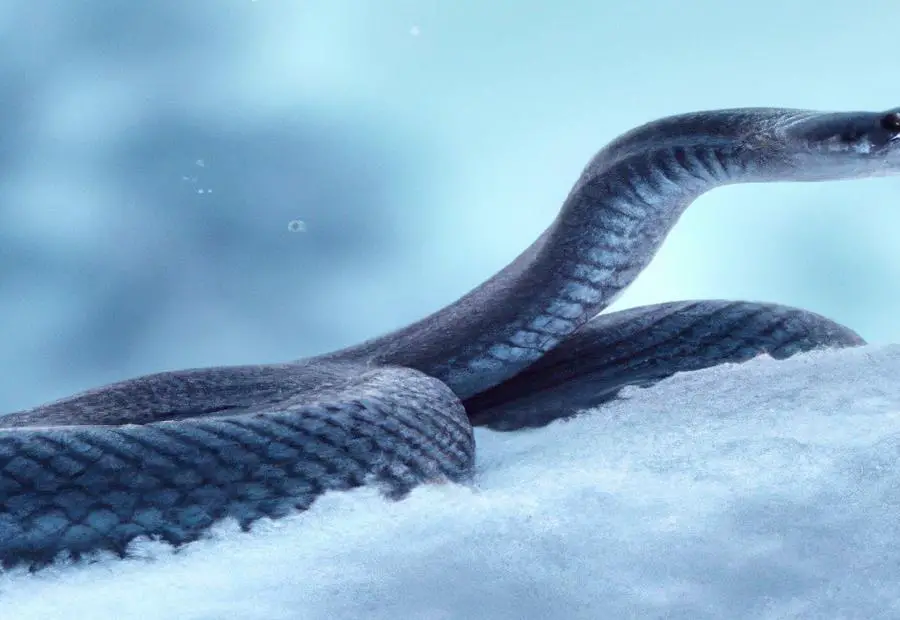
Photo Credits: Ruggedreptiles.Com by Gary Anderson
During the winter months, snakes have fascinating ways of adapting to the challenges of the season. In this section, we’ll uncover the remarkable strategies that snakes employ to survive in cold temperatures. Get ready to delve into the world of thermal regulation and discover how snakes cleverly maintain their body heat. Then, we’ll unveil the secret behind their antifreeze properties, which allow these cold-blooded creatures to navigate icy conditions. Prepare to be amazed by the incredible adaptations of snakes during winter!
Thermal Regulation
Thermal regulation is crucial for the winter survival of snakes. These cold-blooded creatures depend on external heat sources to control their body temperature. When temperatures decrease during winter, snakes employ various strategies to maintain their body heat.
1. Seeking shelter: Snakes seek out insulated locations such as underground burrows, rock crevices, or tree holes. These spaces provide protection from the cold and aid in conserving heat.
2. Basking: On sunny winter days, snakes may emerge from their shelters to bask in the sun. They position themselves in open areas that receive the most sunlight, absorbing heat to warm their bodies.
3. Coiling: Snakes may coil their bodies to minimize the exposed surface area and reduce heat loss to the environment.
4. Behavioral adaptations: Snakes adjust their behavior to regulate their body temperature. They move between warmer and cooler environments, selecting spots that assist them in maintaining the appropriate body temperature.
5. Hibernacula selection: Snakes choose hibernation sites that offer favorable thermal conditions, such as consistent temperatures and minimal fluctuations.
By employing these thermal regulation strategies, snakes are able to conserve heat and survive the winter. Understanding these adaptations allows us to appreciate how snakes have evolved to flourish in challenging conditions.
In 1988, researchers made a remarkable discovery: the Svalbard reindeer snake, a rare species found in the Arctic. These snakes possess extraordinary thermal regulation capabilities that enable them to survive in the harsh Arctic climate. Despite freezing temperatures, they are able to maintain their internal body temperature within a narrow range, allowing them to thrive in this extreme environment. This discovery showcased the incredible adaptations of snakes and their remarkable ability to regulate body temperature even in the most severe conditions.
Antifreeze Properties
When it comes to surviving winter, snakes have antifreeze properties that allow them to withstand extremely cold temperatures without freezing.
Antifreeze properties are key to a snake’s ability to survive in freezing winter conditions.
Snakes produce antifreeze proteins within their blood, which prevent the binding of ice crystals within the snake’s blood.
By preventing the binding of ice crystals, these antifreeze proteins ensure that the snake’s blood remains liquid.
This mechanism protects the snake’s cells from freezing and potential damage.
The existence of antifreeze properties is crucial for a snake’s survival as it enables them to emerge from hibernation in spring, fully prepared for feeding and reproduction.
How Do Snakes Survive Winter and Emerge in Spring?
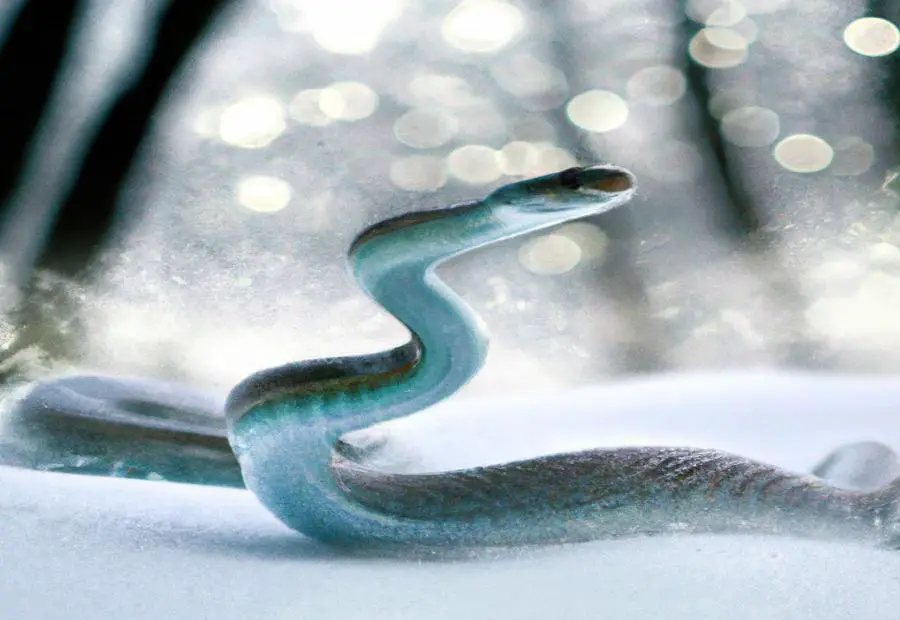
Photo Credits: Ruggedreptiles.Com by Zachary Taylor
As winter sets in, snakes retreat to their secret hideaways, leaving us wondering where they disappear to. In this fascinating section, we will uncover the mysteries of how snakes survive the cold months and emerge once again with the arrival of spring. Brace yourself as we explore the extraordinary events of their emergence from hibernation, their feeding habits, and the intricate world of snake reproduction. Prepare to be astonished by the captivating winter habits of these elusive creatures.
Emergence from Hibernation
Snakes emerge from hibernation to find food and mates. After months of fasting, they search for prey to replenish their energy. Group-hibernating snakes may emerge together, increasing their chances of finding food.
During their emergence from hibernation, snakes initially have slow metabolism and sluggish movements. As they warm themselves in the sun, their metabolism increases and they become more active. This gradual increase allows them to adjust to spring conditions.
In addition to food, male snakes also seek females for breeding during their emergence from hibernation. They engage in courtship behaviors to attract mates. Finding a suitable mate is vital for species survival.
Feeding and Reproduction
Feeding and reproduction are crucial aspects for the survival of snakes in winter.
Snakes strategically consume larger meals to accumulate fat reserves in preparation for hibernation.
They specifically target prey that provides sufficient energy during this period.
For example, a snake may consume a rodent that constitutes 10-15% of its body weight.
The frequency and quantity of feeding vary depending on the species and size of the snake.
Reproduction is another significant aspect for snakes in winter.
They engage in mating prior to hibernation.
The snakes retain sperm internally and fertilize their eggs in the spring.
Female snakes actively search for suitable locations to lay and incubate their eggs after emerging from hibernation.
The timing and success of reproduction are influenced by environmental factors and the availability of food.
It is fascinating to note that black rat snakes in North America have been observed raiding bird nests during winter.
These snakes skillfully climb trees, where nests are more visible, and consume eggs and nestlings.
This behavior exemplifies the adaptability and resourcefulness of snakes, allowing them to sustain themselves and secure food even under difficult conditions.
Some Facts About Understanding Snakes’ Winter Habits: Where Do They Go?
- ✅ Snakes in temperate regions enter a deep sleep called brumation during the winter. (Source: foxweather.com)
- ✅ Snakes do not eat leading up to winter as they cannot metabolize their food during brumation. (Source: our team)
- ✅ Snakes choose underground locations just below the frost line to sleep during winter. (Source: callnorthwest.com)
- ✅ Snakes seek shelter in various places such as caves, logs, rocks, and human habitats. (Source: our team)
- ✅ It is advised to leave snakes alone as they will not bother or chase humans. (Source: foxweather.com)
Frequently Asked Questions
Q: Where do garter snakes go in the winter?
A: Garter snakes in Virginia seek out shelters such as caves, holes, rocks, logs, and hibernacula (underground dens) to hibernate during the winter months. These safe burrows provide protection from the cold temperatures.
Q: Do snakes sleep in rotting logs during the winter?
A: Yes, snakes may choose to sleep in rotting logs during the winter. These logs provide insulation and can help snakes maintain a more stable temperature. However, they may also seek out other shelters such as caves, rocks, or hibernacula.
Q: What are some pest risks associated with snakes’ winter habits?
A: Snakes are cold-blooded animals and their metabolic activity decreases during winter. This can lead to reduced appetite and decreased movement. However, snakes may still awaken from their deep sleep on warmer winter days to find food, such as rodents, lizards, or frogs.
Q: How can I prevent snakes from hiding in my property during winter?
A: To prevent snakes from hiding on your property during winter, it is important to manage your landscape by minimizing tall grass and overgrown areas that attract rodents, which are a food source for snakes. Regularly cut shrubbery, keep grass mowed, and eliminate food sources like spilled food or standing water. Additionally, store wood piles properly, at least 12″ off the ground and in sealed containers if possible.
Q: Can snakes enter homes through damaged window and door screens?
A: Yes, snakes can utilize existing openings in homes such as gaps near pipes, damaged window and door screens, open windows and doors, damaged soffits, and cracks in the exterior. It is important to carefully examine your property and seal any potential openings that snakes may use.
Q: Should I use trekking poles or a walking stick while hiking in snake habitat?
A: It is advised to use trekking poles or a walking stick while hiking in snake habitat. This helps to alert snakes of your presence, giving them the chance to avoid you. Snakes are generally not aggressive and would prefer to retreat rather than interact with humans.

